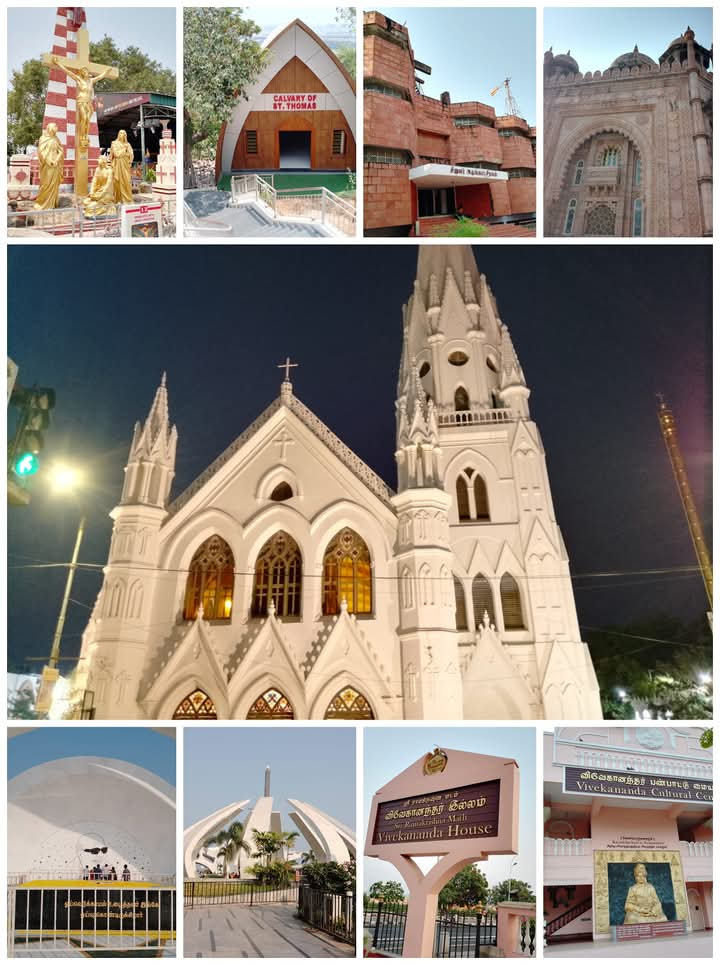Chennai, the capital of Tamil Nadu, is a city that beautifully balances its rich cultural heritage with modern urban development.
Over the years, it has transformed into one of India’s most beautiful cities, attracting both residents and visitors alike. This transformation is the result of concerted efforts in urban planning, cultural preservation, environmental sustainability, and infrastructural development.
Cultural Heritage and Architectural Beauty:
Chennai’s beauty is deeply rooted in its cultural heritage and architectural landmarks. The city boasts a plethora of temples, churches, and colonial-era buildings that add to its charm.
Temples and Religious Structures: Chennai is home to several ancient temples, such as the Kapaleeshwarar Temple in Mylapore and the Parthasarathy Temple in Triplicane. These structures are not only places of worship but also showcase intricate Dravidian architecture.
Colonial Architecture: The presence of colonial-era buildings like the Ripon Building and the Chennai High Court adds a historical dimension to the city’s skyline.
Churches: The San Thome Basilica, built over the tomb of St. Thomas, and the Church of Our Lady of Light (Luz Church), established in 1516, are significant religious landmarks that reflect the city’s diverse religious history.
Urban Planning and Infrastructure Development
The city’s transformation is also attributed to strategic urban planning and infrastructural developments aimed at enhancing its beauty and functionality.
Smart City Initiatives: Under the Smart City Mission, Chennai has implemented various projects to improve urban living. These include the development of green spaces, smart traffic management systems, and the restoration of water bodies.
Beautification Projects: The Greater Chennai Corporation has undertaken beautification drives focusing on planting native species of trees and shrubs across the city. This not only enhances the city’s aesthetic appeal but also promotes biodiversity.
Stormwater Drainage Systems: To address flooding issues, the city has invested in stormwater drainage systems, such as the Kosasthalaiyar Basin project, which aims to restore water bodies and install extensive stormwater drains.
Environmental Sustainability and Green Spaces:
Chennai’s commitment to environmental sustainability is evident in its efforts to create and maintain green spaces.
Urban Forests and Green Parks: The city has developed Miyawaki urban forests and vertical gardens to increase green cover. These initiatives help in reducing urban heat and improving air quality.
Restoration of Water Bodies: Lakes like Paruthipattu Lake have been restored and converted into eco-parks, providing recreational spaces for residents and contributing to the city’s ecological balance.
Heritage Tree Protection:
The identification and protection of heritage trees, such as the 450-year-old Adyar Banyan Tree, highlight the city’s dedication to preserving its natural heritage.
Cultural Festivals and Community Engagement:
Chennai’s cultural vibrancy is showcased through various festivals and community events that celebrate its traditions and bring people together.
Chennai Sangamam:
This annual Tamil cultural festival, held during the Pongal season, features folk music, dance, traditional arts, and local cuisine, reflecting the city’s rich cultural tapestry.
Community Involvement:
Initiatives like the beautification drive involving corporate support for planting native species encourage community participation in maintaining the city’s beauty.
Tourist Attractions and Natural Beauty:
Chennai’s natural beauty and tourist attractions play a significant role in its appeal.
Marina Beach: As one of the longest urban beaches in the world, Marina Beach is a popular destination for both locals and tourists. The beach promenade is lined with statues of historical figures and offers a scenic view of the Bay of Bengal.
Cholamandal Artists’ Village:
This artists’ commune is the largest of its kind in India and showcases modernist art, contributing to the city’s artistic landscape.
Eco-Parks:
The development of eco-parks around lakes like Paruthipattu provides residents with spaces to connect with nature and promotes environmental awareness.
Modern Amenities and Accessibility :
The city’s development includes modern amenities that enhance its livability and accessibility.
Convention Centres: The establishment of the Kalaignar International Convention Centre on East Coast Road aims to host major events, reducing congestion in city venues and boosting tourism.
Accessibility Improvements:
The introduction of mechanized wheelchairs at Marina Beach and the development of play areas and facilities for children and the differently-abled ensure that public spaces are inclusive and accessible to all.
Chennai’s journey towards becoming one of the most beautiful cities in India is a testament to the harmonious blend of tradition and modernity. Through strategic urban planning, environmental sustainability, cultural preservation, and community engagement, the city has transformed into a vibrant metropolis that honors its past while embracing the future. As Chennai continues to evolve, it remains a shining example of how cities can grow and prosper without losing their unique charm and identity.

